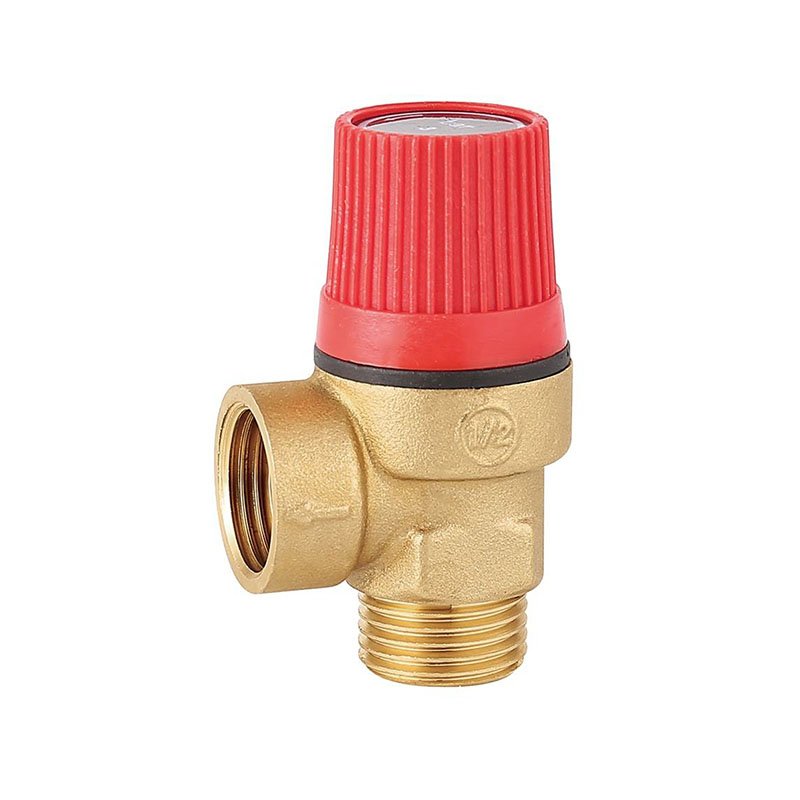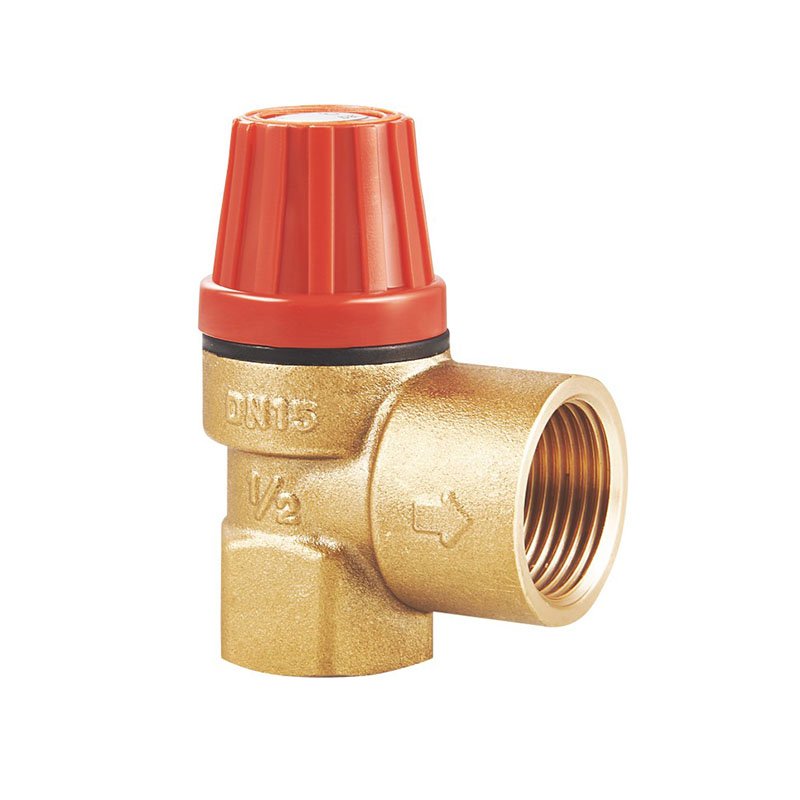In any pressurized system, there’s a constant concern: what if the pressure goes too high? If pressure levels exceed safe limits, it can lead to catastrophic system failure, safety hazards, or even explosions. That’s where a pressure safety valve (PSV) comes into play. These valves are designed to protect your system and ensure smooth, safe operation by releasing pressure before it reaches dangerous levels. Keep reading to understand how pressure safety valves work and why they’re crucial for any industrial system.
A pressure safety valve (PSV) is a vital safety component in pressurized systems that automatically releases excess pressure, preventing catastrophic failures. Learn about its function, types, and more in this article.
Pressure safety valves are the unsung heroes of pressurized systems. By releasing excess pressure before it becomes dangerous, they help prevent equipment damage, product loss, and even accidents. But when should you use a PSV, and what exactly are its functions? Let’s dive deeper into how this safety valve works, the different types available, and why it’s important to choose the right one for your system.

What Is the Safety Valve in the Pressure System?
A pressure safety valve (PSV) is an automatic device used in systems that operate under pressure to protect equipment, prevent accidents, and ensure operational safety. These valves are typically spring-loaded and are designed to open when the internal pressure reaches a predetermined threshold, releasing excess pressure in a controlled manner. Once the pressure drops to a safe level, the valve automatically closes. This process prevents damage to pipelines, tanks, and other equipment from over-pressurization.
PSVs come in various designs, but their primary function is the same: to relieve excess pressure to maintain system safety. For instance, in steam boilers, industrial piping systems, and even HVAC systems, a pressure safety valve ensures that the system remains within safe operational limits, keeping personnel and equipment safe.
Different types of pressure safety valves include:
- Spring-loaded valves: The most common, which use a spring to hold the valve closed until a certain pressure is reached.
- Pilot-operated valves: These use a small pilot valve to control the larger valve’s operation, providing more precise control over pressure relief.
- Thermodynamic valves: Designed to handle high-pressure and high-temperature systems, often used in critical applications like power generation.
What Is the Function of the PRV?
A Pressure Reducing Valve (PRV) is often confused with a Pressure Safety Valve (PSV), but they serve distinct functions in a system. The main job of a Pressure Reducing Valve is to regulate and maintain a set pressure within a system, ensuring that the downstream equipment and components are protected from excessively high pressure.
While a PSV is primarily a safety device, automatically releasing pressure when it exceeds the preset threshold, a PRV works proactively to lower the incoming pressure to a more manageable level. This helps prevent equipment from being subjected to high pressures that could cause wear, tear, or failure.
PRVs are commonly used in residential and industrial water systems, gas systems, and steam systems. They’re often part of heating and cooling systems, where pressure regulation is essential to prevent damage to boilers, pumps, or heat exchangers.
Key difference: A PSV responds to a pressure increase and releases excess pressure when necessary, while a PRV maintains constant pressure to avoid system overloads.

What Is the Difference Between a Pressure Regulator and a PRV?
While a pressure regulator and a pressure reducing valve (PRV) might seem similar, there are some key differences in their functionality and application. Both devices are designed to control pressure, but they do so in different ways.
A pressure regulator is typically used to maintain a steady downstream pressure by adjusting to varying upstream pressures. This device is commonly found in systems where the upstream pressure fluctuates, but a constant downstream pressure is required for efficient operation. For example, in gas pipelines, a pressure regulator ensures that the downstream equipment receives gas at the right pressure, regardless of the fluctuations in the main supply line.
On the other hand, a PRV is specifically designed to reduce the pressure in a system and ensure it stays within safe operating limits. It’s often used in water and steam systems where pressure can get dangerously high and needs to be reduced to prevent damage to piping or equipment.
Key difference: While both devices control pressure, a pressure regulator is mainly used to maintain consistent downstream pressure, while a PRV is used to ensure safe and reduced pressure levels in a system.
Why Does My Pressure Relief Valve Keep Leaking?
If you notice that your pressure relief valve (PRV) is leaking, it could indicate several potential issues. It’s important to understand that a leaking valve is a sign that the system might be under stress or the valve itself is malfunctioning. Here are some common causes:
- Excessive Pressure: If the system pressure is constantly exceeding the valve’s set point, the valve will try to open and release pressure. However, it might not close properly afterward, resulting in a constant leak. This could indicate that the pressure settings need adjustment or that the system is over-pressurized.
- Faulty Valve Components: Over time, valve components such as seals, springs, and diaphragms can wear out. If these parts are damaged, they might cause the valve to leak even when the pressure is within the safe range. Regular maintenance and inspections can help catch these issues early.
- Debris or Contamination: Dirt, debris, or corrosion inside the valve can prevent it from sealing correctly, leading to leakage. Contaminants can cause the valve to fail, and in many cases, cleaning or replacing the valve will solve the issue.
- Incorrect Installation: If the valve was installed improperly, it might not function as expected. Improper seating or misalignment can cause pressure relief valves to leak. It’s essential to ensure that the valve is installed according to the manufacturer’s specifications.
To prevent leaks, regular maintenance, inspections, and prompt replacement of worn-out parts are necessary. Additionally, checking the system pressure regularly ensures that the PSV is functioning optimally.

Pressure Safety Valve Types
There are various types of pressure safety valves, each designed to handle specific system requirements. The type you choose depends on factors such as system pressure, temperature, and application. Some of the most common types include:
- Spring-loaded Pressure Safety Valves: These are the most common type, where a spring mechanism keeps the valve closed until the system pressure reaches the preset limit, causing the valve to open and release pressure.
- Pilot-operated Pressure Safety Valves: These valves use a smaller pilot valve to control the operation of the main valve, providing more precise control over pressure relief. They are often used in high-pressure systems where fine-tuning of pressure is required.
- Thermodynamic Pressure Safety Valves: Typically used in systems with high temperature and pressure, such as in power generation plants. These valves use the thermodynamic principle to open and close the valve based on the system’s pressure and temperature.
- Balanced Bellows Pressure Safety Valves: These are designed for systems that need to cope with fluctuating inlet pressures. They offer better performance and precision, especially in systems that handle fluids under varying conditions.
Pressure Safety Valve Standards
Pressure safety valves must meet strict standards to ensure they function safely and effectively. Pressure safety valve standards vary by country and application, but generally, they are designed to ensure that valves can reliably release pressure without causing harm to the system or personnel. Some of the most recognized standards include:
- ASME (American Society of Mechanical Engineers) Standards: These guidelines are commonly used in the United States and are essential for pressure relief valves used in steam boilers, pressure vessels, and related systems.
- PED (Pressure Equipment Directive): This European standard is used to ensure the safety of pressure equipment, including safety valves, in the European Union.
- API (American Petroleum Institute) Standards: These are specific to the oil and gas industry, ensuring the safe operation of pressure safety valves in critical applications.
Choosing valves that comply with international safety standards is crucial for ensuring reliability, performance, and system safety.
Pressure Safety Valve Price
The price of a pressure safety valve can vary significantly based on its type, size, material, and application. Factors such as the valve’s maximum pressure rating, temperature tolerance, and whether it meets specific international standards also affect the price.
For instance, a basic spring-loaded PSV might be more affordable than a pilot-operated valve designed for high-precision applications. Additionally, the material of construction—whether brass, stainless steel, or other alloys—also impacts the price.
When purchasing a pressure safety valve, it’s essential to balance cost with quality. While lower-priced valves might seem attractive, they could be prone to failure, especially if the quality isn’t up to standard. Opting for a reputable manufacturer that offers high-quality valves can save costs in the long run by reducing the likelihood of system failure and minimizing maintenance costs.
Conclusion
In summary, a pressure safety valve (PSV) is an essential component for any pressurized system, ensuring safety by releasing excess pressure before it causes damage. Whether you need a spring-loaded valve, a pilot-operated valve, or a thermodynamic valve, understanding the different types and their functions is key to maintaining the integrity of your system. Regular maintenance and proper valve selection are critical to ensuring long-term, safe operation. Don’t overlook the importance of choosing the right pressure safety valve—your system’s safety depends on it.
Choose IVALVECRAFT, choose reliable partner, enjoy the high quality and best service.


